- Submitted by Marianne (Posted June 2024)
0 Comments
- By Katrin Powell and Greg Ross (Posted May 2024) In the spring of 2024, the Cavity Nesting Group (CNG) had four outings where we cleaned out existing boxes and erected five new boxes. It's been very exciting going out with the various Rocky Mountain Naturalist volunteers as we excitedly ‘unbox’ a nest to see what we would find inside. We take turns looking, observing and giving deductions as to what used the box based on what we see, and with monitor notes from the previous season. The CNG group now has 22 volunteers who come out and help with the opening of the boxes once a year, to decipher what has used them and to clean them out. The monitors, by putting everything together, determine the species use and the outcomes, having learned a lot over the past two years. Monitors also ‘adopt’ a box for the nesting season and take some time each week to observe it from a distance, approximately once a week for 30-60min (or to whatever degree the monitor is able), noting any use of the box as well as any cavity nesting species in the area. Out of the 16 boxes we monitored in 2023 located at Elizabeth Lake, Community Forest and Irrigation Fields, seven had successful fledglings of ducks, most of which were Barrows Goldeneye. There was also a Goldeneye species (unconfirmed which one), and one wood duck, or WODU, at Elizabeth Lake. Notable mention also goes to the Bufflehead that used a box at the Irrigation Fields, but something must have happened to the female, as the chicks were partially developed in the eggs and did not come to a fledgling state. We are overjoyed that the monitors have been so keen! We have heard such remarkable experiences from everyone, just by sitting quietly in nature once a week and being able to share those experiences with the group. The CNG is growing to become something quite remarkable, leading people to ‘slow life down a little’ and ‘experience nature’ as well as learning about our feathered duck friends and other appreciated species that use cavities - owls included! 2023 marked the second year that we’ve had a dedicated Cavity Nesting Group. Thank you so much to the monitors, past and present! If you would like to learn more about the CNG or get involved, please contact via the webforms here on the website or email [email protected] Below are photos from this spring’s ‘unboxing’ events. Irrigation Fields and Rampart Elizabeth Lake We’re learning more about identifying WODU eggs versus Bufflehead eggs, which we used to not be able to tell apart. Thanks to Gretchen’s donation of a ‘Birds of the World’ account from Cornell, we now have better information than we would have had just by googling. WODU eggs can vary from elliptical to sub elliptical. Bufflehead eggs are elliptical to oval. The egg on the left is sub elliptical, and the one on the right is elliptical. The one on the left is too short to be a BUFF egg, and the one on the right is too wide to be a BUFF, based on minimum and maximum sizes from Cornell data, but they both meet the specs for a WODU. Strange, as they are so different. One cannot be too quick to make assumptions! But we are open to discussion as we are learning too! McGinty Lake – Cavity Nesting Box Project - By Theckla Sawicki Thursday, April 4th, McGinty Lake was the focus of the Cavity Nesting Group, with the permission of the Executive from the Meadowbrook Community Association – the Stewards of the McGinty Lake Recreation Area. 12 participants took part in placing two cavity nesting boxes close to the lake. One box is highly visible from the main picnic area, which will make for ease of monitoring as well as offer up an opportunity for instruction of school groups that make good use of the area. The second box was placed at the south end of the lake close to a known nesting area for Common Goldeneye.
Other cavity nesters seen at McGinty Lake in the past include:
Hooded Merganser - last seen in April 2023. Wood Duck – no reports from 2021-2024. Turtle Day coming to Elizabeth Lake on April 26, 2023
Western painted turtle hatchlings are the star of this free, family event (CRANBROOK) Turtle Day will return to Elizabeth Lake in Cranbrook on April 26. This year, western painted turtles have laid 76 nests in the wetland, and at the end of April, hatchlings will begin to emerge from their nests and make their way to the lake. See the newly emerged hatchlings and learn about their journey, as well as the efforts of the Rocky Mountain Naturalists to protect this Blue-listed, vulnerable species at Turtle Day. Turtle Day is hosted by the Fish & Wildlife Compensation Program (FWCP) together with the Rocky Mountain Naturalists. The free, family event runs from 2:30 p.m. to 4:30 p.m. on April 26 beside the Elizabeth Lake Visitors Centre. Parking is provided behind Elizabeth Lake Lodge. The nesting area at Elizabeth Lake is maintained and monitored by the Rocky Mountain Naturalists working with biologists for the Province of B.C., with funding from the FWCP. Efforts to maintain fencing around the nesting area were successful last year, with only six nests lost to predation. Without intervention, western painted turtles would lose 90% of their nests to predators—primarily skunks. “Habitat loss due to human activities has impacted the Southern Interior population of the western painted turtle, along with road mortality and introduced species,” says Jen Walker-Larsen, the FWCP’s Columbia Region manager. “The work of the Rocky Mountain Naturalists to provide safe nesting habitat and intervention for hatchlings is helping the FWCP conserve and enhance fish and wildlife in watersheds impacted by BC Hydro dams.” The Rocky Mountain Naturalists have a long history of fostering awareness and understanding of our natural environment. They are committed to sharing the message of the western painted turtle’s life cycle—from the egg, to hatching, growing, maturing, and reproducing. The FWCP is a partnership between BC Hydro, the Province of B.C., Fisheries & Oceans Canada, First Nations, and public stakeholders to conserve and enhance fish and wildlife in watersheds impacted by BC Hydro dams. Turtle Day is also made possible with the support of the Ministry of Forests. For more information about Turtle Day and other projects funded by the FWCP, visit fwcp.ca/events. For more information: Angus Glass FWCP Communications Coordinator 250-352-1300 [email protected] Here is a quick guide to "general" arrival week of bird species in the East Kootenay.
It is based on the eBird barchart for the region available here: ebird.org/canada/barchart?byr=1901&eyr=2023&bmo=1&emo=12&r=CA-BC-EK As you can see, ducks are generally the first group to return northward but this year we are still waiting for the following: Tundra Swan TUSW Wood Duck WODO Redhead REDH Ring-necked Duck RNDU Northern Shovelor NSHO Blue-winged Teal BWTE Gadwall Gadwall Also, Ring-billed Gull (RBGU) and California Gull (CAGU) are late; and Common Loon (COLO). At time of writing, I find it difficult to believe we could see Tree (TRES) and Violet-green Swallow (VGSW) any day now because I still have a foot of snow in my yard in Kimberley. And we usually have Western (WEBL) and Mountain (MOBL) Bluebirds back by now, as well as Say's Phoebe (SAPH). Please come soon. Western Meadowlark (WEME) are sometimes here the end of February. One year they arrived to snow-covered fields and had to forage along the plowed road edges - poor things. Looks like it will be the same this year. Actually, it has been the same for the past THREE years, I think. And where are the Brewer's Blackbird (BRBL), Spotted Towhee (SPTO), and Fox Sparrows (FOSP)? Anyway, look for the above soon, and Osprey (OSPR). Happy Birding! Dianne C. We had 'Little Big Day' last week on May 28th. Congratulations to the the team 'Dipperette’s' for seeing the most species seen ever recorded by a single team: 130 species! The Dipperette’s consisted of Gretchen W, Helga K, Jo Ellen F. and Wendy H. Well done! The closest year to them was in 2007, when a single team saw 128 species (seen by team ‘Stalkers 4’ which consisted of Cathy, Al, Art and Lois).
Together, all the teams this year saw 148 species, the 4th highest year recorded. There were 3 teams in total. The other 2 teams were the Three-toed Muskateers (Greg R, Jim H and Katrin P) and the Ruthless Birders (Ruth G, Lyle G, Dianne C, Emma B). Little Big Day is a fun birding competition to see which team (up to 4 people) see the most birds (teams need to stay together and at least 2 people from each team need to see each species). Birding takes place between 6am and 6pm, although you can bird less if you want and you don't really need to 'compete'. It's all for fun. Teams contribute $25, which goes to a worthy nature related cause. This year, the money is being donated to the 'Elizabeth Lake Shoreline Restoration Project’, being done by the Rocky Mountain Naturalists. A combined list of what we saw: Canada Goose Trumpeter Swan Wood Duck Blue-winged Teal Cinnamon Teal Northern Shoveler Gadwall Eurasian Wigeon American Wigeon Mallard Green-winged Teal Canvasback Redhead Ring-necked Duck Greater Scaup Lesser Scaup Bufflehead Common Goldeneye Barrow's Goldeneye Hooded Merganser Common Merganser Ruddy Duck Wild Turkey Ruffed Grouse Pied-billed, Horned, Red-necked, and Eared Grebes Rock Pigeon Eurasian Collared-Dove Mourning Dove Vaux's Swift Black-chinned, Calliope, and Rufous Hummingbirds Virginia Rail Sora American Coot Black-necked Stilt American Avocet Killdeer Long-billed Curlew Wilson's Snipe Wilson's Phalarope Spotted and Solitary Sandpipers Bonaparte's and California Gulls Black Tern Common Loon Great Blue Heron Turkey Vulture Osprey Northern Harrier Sharp-shinned Hawk Bald Eagle Red-tailed Hawk Red-naped Sapsucker Lewis', American Three-toed, Downy, Hairy, and Pileated Woodpeckers Northern Flicker American Kestrel Merlin Peregrine Falcon Western Wood-pewee Willow, Least, Hammonds, Dusky, and Pacific-slope Flycatchers Say's Phoebe Western Kingbird Eastern Kingbird Cassin's Vireo Warbling Vireo Stellar's Jay Blue Jay Black-billed Magpie Clark's Nutcracker American Crow Common Raven Black-capped and Mountain Chickadees Northern Rough-winged, Tree, Violet-green, Bank, Barn, and Cliff Swallows Ruby-crowned and Golden-crowned Kinglets Red-breasted, White-breasted and Pygmy Nuthatches House, Pacific and Marsh Wrens American Dipper European Starling Gray Catbird Western and Mountain Bluebirds Townsend's Solitaire Swainson's and Hermit Thrush American Robin Cedar Waxwing House Sparrow American Pipit Evening Grosbeak House Finch Cassin's Finch Red and White-winged Crossbills Pine Siskin American Goldfinch Dark-eyed Junco Chipping, Clay-coloured, White-crowned, White-throated, Vesper, Savannah, Song and Lincoln's Sparrows Spotted Towhee Yellow-headed Blackbird Bobolink Western Meadowlark Bullock's Oriole Red-winged Blackbird Brown-headed Cowbird Brewer's Blackbird Northern Waterthrush Orange-crowned, Nashville, and MacGillivray's Warblers Common Yellowthroat American Redstart Yellow, Yellow-rumped, Townsend's, and Wilson's Warblers Western Tanager Lazuli Bunting by Dianne Cooper Here is a brief biography about founding Rocky Mountain Naturalists member Mildred White (1916 – 2001), her birding sightings and their journey into the public archive on the occasion of the last of her birding data finally getting entered into eBird. Mrs. White recorded her bird sightings between April 1964 and December 2001. She wrote them down in 6 Blueline brand record books, which are in journal-style, and 5 black ringed binders, in list-style. She began recording her natural history observations on 05-Apr-1964 when she was 48 years old. At first, she re-used loose sheets of letter-size paper to record her "home" sightings of birds and animals. The paper was rescued from the trash at the gift shop in the Kimberley Hospital where Mrs. White was a volunteer with the Hospital Auxiliary. Every once in a while she would copy these notes into Blueline-brand bound record books, in a narrative journal-style with wonderfully legible cursive handwriting. For field trips, she used little pocket notebooks, also transferring these notes to the Bluelines. After doing it this way for about 25 to 30 years, she switched to list-style for her "final copy" in medium-sized black ringed-binders. She also re-copied some of her journal-style sightings as lists in the black binders. In December of 1974, Mildred and her husband, King, moved from a modest house on a small city lot in Kimberley to a newly built one on several acres south of Ta Ta Creek. The acreage was on the western edge of the vast grassy benchlands bordering the Kootenay River. They built a river-rock birdbath, standing over one meter tall. It attracted many birds, deer, coyote, and small mammals. They also put up several nest boxes and feeders for the birds and squirrels. A shelf-type feeder below the utility room window was easily accessed from indoors during the winter. In especially cold weather Mrs. White stocked it with her homemade shortbread, a special treat for the birds. A variety of bird habitats were within walking and listening distance of their property. There was a creek with beaver ponds — Waite Creek, which flows into Bartholomew Lake, and Sun Marsh, named after Joe Sun, a resident of the acreage adjacent to the Whites'. The Suns operated a market garden with home delivery service of vegetables. Mrs. White enjoyed traipsing around Wasa Sloughs. The lack of city services gave her an excuse to make the trip across the Kootenay River Valley to the refuse station south of the Sloughs. From there she would head for the Sloughs, taking a dirt track north through the pine forest to a clearing we now call "Mildred's Meadow". It was her tradition to check this field for the first of the spring buttercup blooms peeking up between the thick litter of pine needles. This signaled spring was in full flight, the ice would soon be off Wasa Sloughs, so it was time to start looking for the spring arrival of birds. Mr. White built a small boardwalk and viewing blind at the end of a spit on the east side of the Sloughs where they photographed waterfowl. It was still functional in 1979 and I used it several times myself when I first started birding; I didn't know the White's then but had heard about them, everybody had. They also had a portable blind they set up at Sun or Bartholomew Marshes. She recorded sightings for Project Feederwatch, the Breeding Bird Survey, American Birds / Northwest Field Notes and the BC Sight Record and Nest Record Schemes, the latter two provided data for the four-volume work "The Birds of British Columbia", by R. W. Campbell and others. Other activities and projects she worked on were for the Rocky Mountain Naturalists, the Federation of BC Naturalists, and the Rocky Mountain Trench Natural Resources Society. She helped start two of the local Christmas Bird Counts. Mildred was also a guest speaker at Wasa Lake Provincial Park, using her own and King's slides in her presentations. She wrote a nature column in the Kimberley Bulletin for many years. In 1996, she and other members of the Rocky Mountain Naturalists composed the "Rocky Mountain Naturalists Wildflower Checklist" commemorating the tenth anniversary of the RMN. And they also made a "Birding Tour" brochure. In 2000, at the age of 84, she took a computer class at Kimberley Campus of the College of the Rockies to learn Microsoft Excel. Because of her experiences with other data banks, she was determined to get her data digitized and distributed. She would contribute records to many organizations and people but then would never hear of how the data were used or what help it had been. In some cases, reports and publications were unpublished and difficult to access. In other cases, the cost of obtaining published copies was prohibitive. If she'd been around when cell phones and the eBird app came out, I have no doubt she would have embraced them both whole-heartedly. Also, Mrs. White wanted to acknowledge the hundreds of fellow bird watchers who told her of the birds they'd seen, accompanied her on field trips, sharing their enjoyment of birds. I met Mrs. White in July of 2001 and because of my interest and background with the beginnings of the digitization of bird records, I agreed to digitize hers. We got a grant from Columbia Basin Trust for tuition for a course in MS Access and the software program; then a grant from BC Nature to publish the database and pay me for some of my time (which worked out well because with my "wages" I was able to replace my stolen spotting scope - but that's another, shorter story). In the autumn of 2001, we photocopied her 5 black binders at the Kimberley Hospital—they allowed us to use their machine because of all her work with the hospital auxiliary. She passed away in December. I continued with the project and five years later, in 2006, "published" a database containing data from her black ringed binder notebooks: almost 24,000 bird, animal, and plant sightings of Mrs. White's and over 200 other contributors over 27 plus years. The database was disseminated to anyone who requested a copy. The Species Inventory Project, Government of British Columbia uploaded the sightings to their online database, making it available to everyone. Dr. Mike Panian of the Species Inventory Project said the database was the “largest one-time contribution by a single person in the history of the provincial databank!” Also in 2006, Dick Cannings, an ornithologist with Bird Studies Canada at the time, and current MP for South Okanagan—West Kootenay, uploaded approx. 17,500 of the bird sightings to eBird. eBird is an online database of bird sightings contributed by citizen scientist launched in 2002 and operated by Cornell University, New York. Mrs. White's sightings jump-started eBird in the region. Twenty years later, birders, researchers, and naturephiles find eBird almost indispensable for its data and an inspiring and invaluable resource for their birding activities. Now, thanks in part to the pandemic which allowed me to focus my undivided attention on the onerous task of going through her narrative journals, I was able to glean another 6,900 or so bird sightings from her Blueline books. Between the interesting antics of chipmunks, what plants were in bloom, what subjects were deemed promising enough to use up costly photographic film and maybe good enough to pay for printing, where King went fishing and with whom, who dropped by for a visit - friends, family and fellow birders, and what birds and animals they reported, were records of her first time seeing many East Kootenay species. eBird now houses over 24,000 of Mrs. White's bird sightings. Perusing the East Kootenay checklist on eBird, looking at the date of "first seen": Mrs. White recorded the first sightings of 160 species in the region (we have 348 species but only 306 are on eBird). This is eight times more than the contributor with the next "most firsts", Ian McTaggart-Cowan. Dr. McTaggart-Cowan visited the Newgate area in May of 1930 and recorded the first sightings of 20 of our species. Mrs. White's first "first" was two Killdeer flying down Mark Creek on 5 Apr 1964, and her last East Kootenay "first" was 19 Black-necked Stilt at Elizabeth Lake on 26 Apr 2001. Her journals will be digitized and housed at the Royal British Columbia Museum for anyone to read. It has been over twenty years since Mrs. White's passing yet her 37 years-worth of fauna and flora sightings remain as an inspiration and a valuable source of information about nature in the East Kootenay. The End Many of us enjoy the avian activity around bird feeders at this time of year. It's a great way to get wonderful views of our local winter birds, see what they're up to - so entertaining and educational.
I was chatting with Top Crop Two in Kimberley last month as they were getting their bird feeding supplies ready. They were saying the popularity of bird feeders skyrocketed last winter - it was a fun pandemic activity - and I expect it will be the same this winter. The latest episode of the podcast "The Warblers" by Birds Canada, titled "Feeding birds the right way", has some great tips for bird feeding, especially about bird feeder hygiene. Andrés and Andrea interviewed Kerrie Wilcox, co-ordinator of Project Feederwatch for Birds Canada. You can read about the podcast here: https://www.birdscanada.org/coming-soon-the-warblers-podcast/ You should be able to find the podcast on whichever podcast app you use (I use Overcast) or by searching the internet. About cleaning your feeders: Project Feederwatch says: "Birds can become ill from leftover bits of seeds and hulls that have become moldy or from droppings that have accumulated on feeder trays. Therefore, you should clean your seed feeders about once every two weeks, more often during times of heavy use or during warm and damp conditions. Research has found that scrubbing debris off feeders and then soaking them for 10 minutes in a diluted bleach solution is more effective at removing bacteria than using soap and water alone." So, in choosing which type of feeder to use, consider ease of cleaning as well as what food for the birds in your area. Project Feederwatch is a great resource for all things about feeders: feeder types, bird identification guides and photos. If you join for a minimum of $25 a year, you can contribute sightings at your feeder (there's an app for that) to help keep track of populations and interactions and whatever else science can tell us about birds. Consider giving a membership as a gift. They have lots of info about all aspects of bird feeders at: https://feederwatch.org/learn/feeding-birds/#feeder-types-2 Some bird feeding tips: - keep your cats indoors; don't have birdfeeders if there are lots of free-roaming cats in your area - clean your feeders by soaking in a diluted bleach solution - use tube-type or small hopper-type feeders rather than the tray-type so birds can't sit and poop on the seeds they're going to eat - spreading disease - also, rake and clear out fallen seeds on the ground OR - place a table under the feeder to catch fallen seeds, then clean it regularly - again with a diluted bleach solution - if you see any sick birds or hear reports of bird diseases going around, clean up your feeder area; you may have to bring in your feeders for a couple of weeks - place feeders close to windows so birds startled off the feeder don't develop enough steam to hurt themselves if they fly into the window OR - put your window screens on the OUTSIDE of the window OR - install reflective decals, streamers, or a commercially available window film designed for this purpose - I save foil seals from yoghurt and coffee cans and tape them randomly on the inside of my windows but this should only be done on windows that don't get a lot of sun; you can trim them to look like snowflakes, if you wish. - try the "ecological" approach for dealing with avian predators: - the little hawks have to eat too but enough is enough around your feeder sometimes - encourage species like Blue Jays who act as sentinels, calling the alarm when a Sharp-shinned Hawk or Merlin sneaks up - situate your feeders and garden plantings to provide quick cover for the little birds. - other mammals can be a problem too, even moose, apparently. - around here, don't put up your feeders until the bears are asleep - for squirrels, well, one of my favorite long-winter-night pastimes is watching videos of clever squirrels foiling bird feeder protections or going through backyard mazes to get their nuts. Our squirrels are usually asleep in the coldest times, which are also best for bird feeding, so good luck on warm days. And don't forget, your feeder sightings are also important for our local Christmas Bird Counts - more on that soon! Happy Birding! Dianne Cooper, Kimberley, BC Join a Christmas Bird Count
Submitted by Daryl Calder You can contribute to 120 years of community science by signing up for a Christmas Bird Count nearby. It's like a little treasure hunt, and if the birds are rare and unusual, it can be quite exciting. If you are a beginning birder, you will be able to join a group that includes at least one experienced birdwatcher. Each team of four needs a driver, recorder, spotters and someone who can leaf through a bird guidebook to check the accuracy of each particular sighting. We tend to drive short distances, hop out to look and listen, and take short walks. Sometimes large flocks of birds are seen; several 'counters/estimators' are helpful to provide accurate information. A photographer is very helpful too. The data collected by count participants over the past 120 years, have become one of only two large pools of information indicating how the birds of the Americas are faring over time. To participate in the count, or to become a 'feeder watcher', please go to the Rocky Mountain Naturalists Christmas Bird Count page accessible HERE. You will find contact information important details and past reports. We hope to have your help at the Cranbrook count on Saturday, December 28, and Kimberley count on Saturday, January 4, 2020. The Rocky Mountain Naturalist's early morning birding outing leaves every Wednesday (usually) at 8AM and returns (usually) by 11:30AM. If you would like to join us please contact Jim H. via our request tab on the Home Page.
Thanks to Jim H., Lyle G., Bob W.and Greg R. for the Great Photos! |
where we talk about
|


























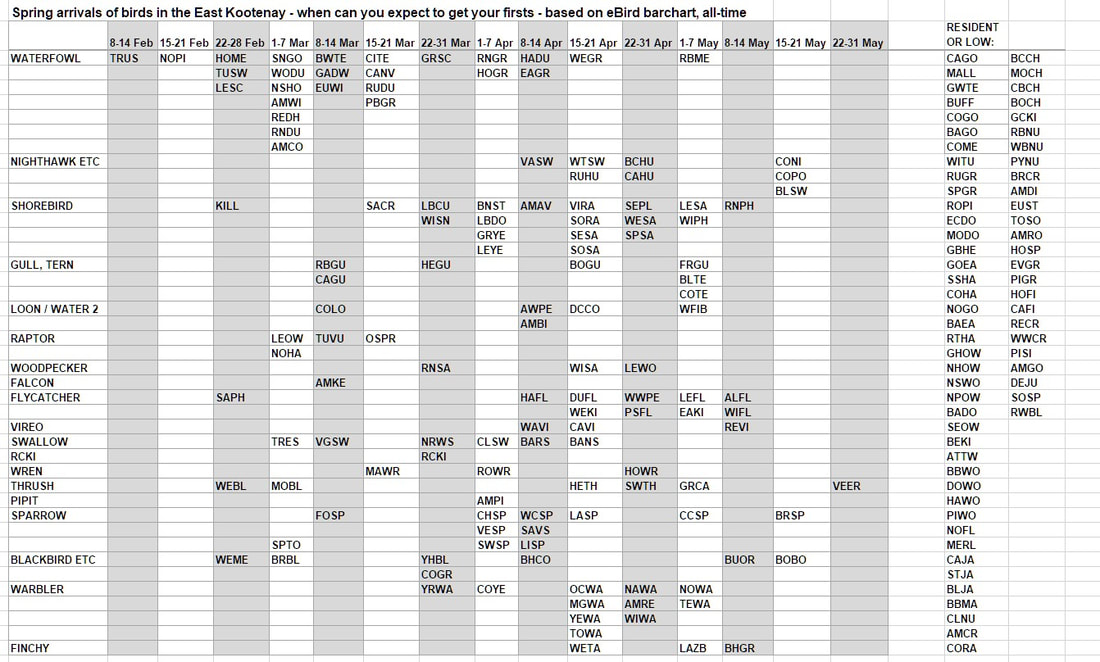
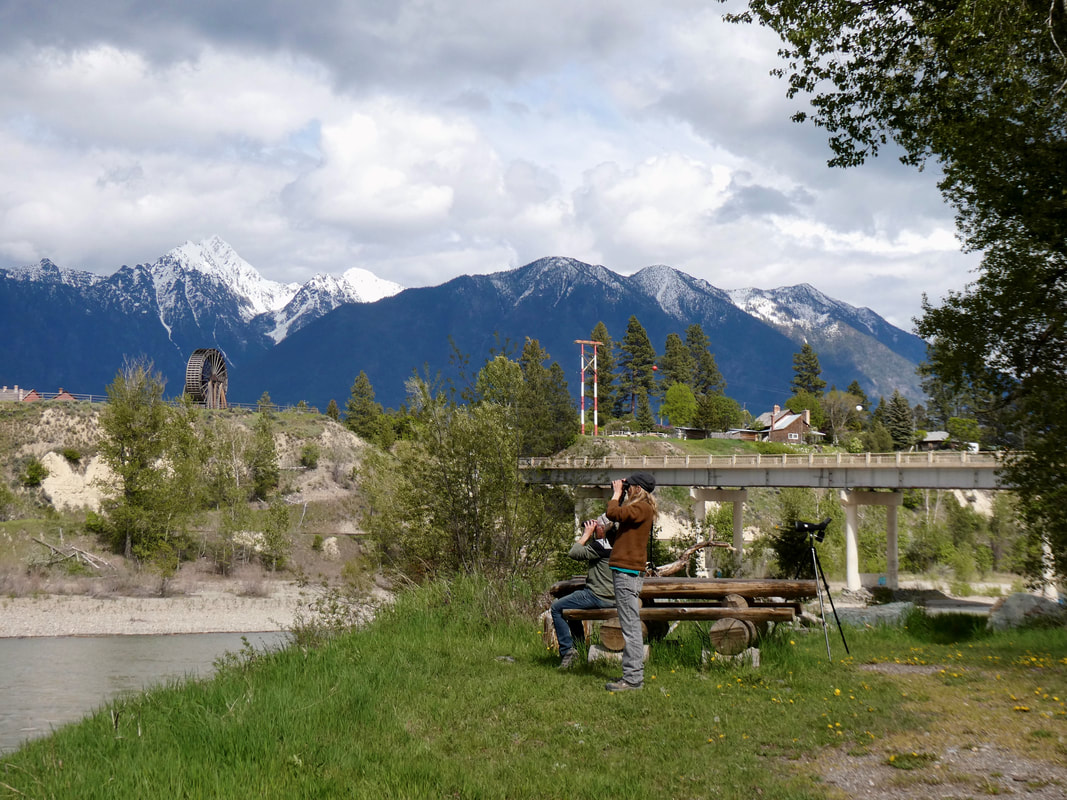
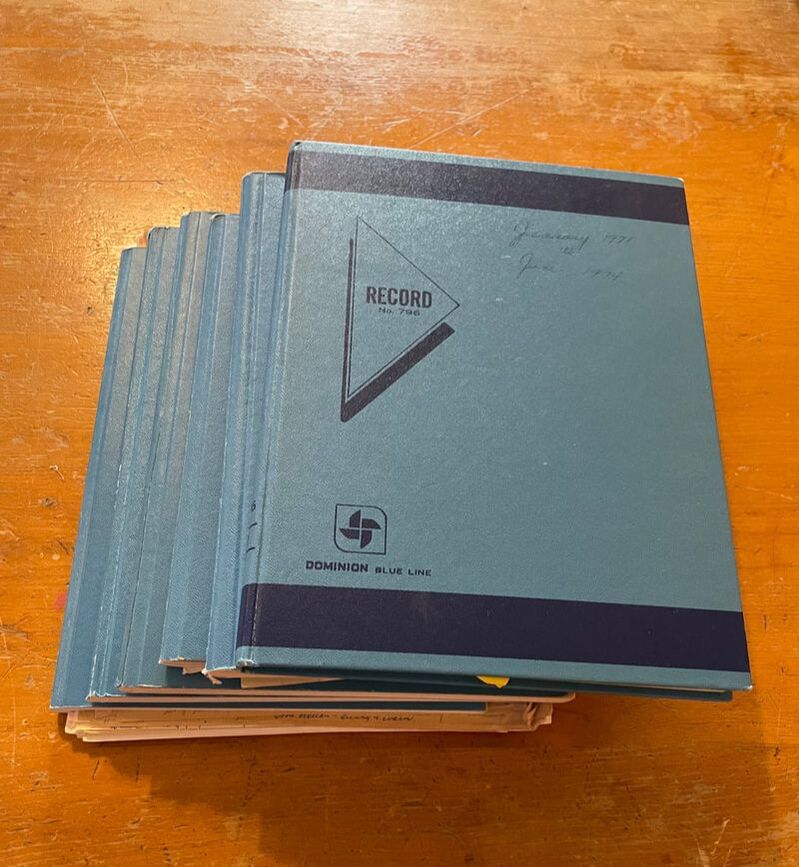
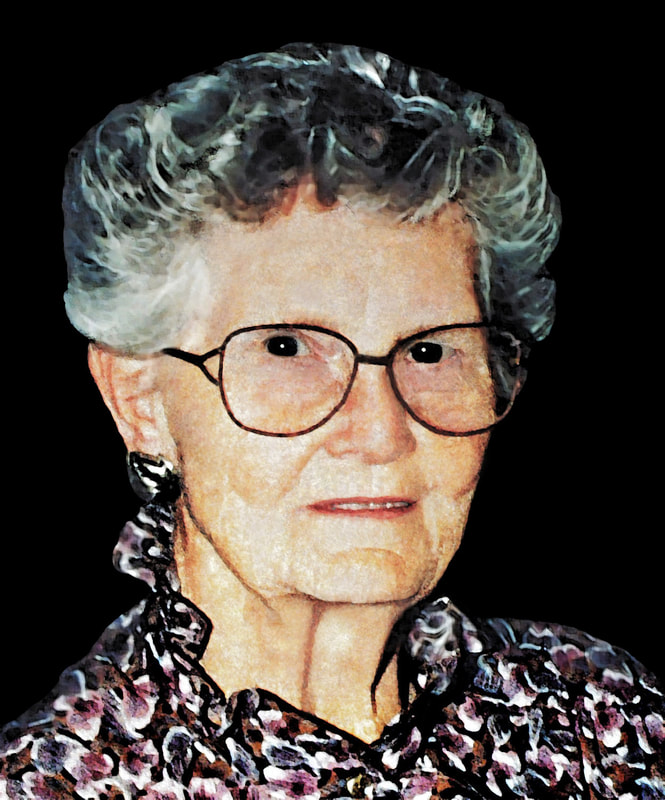
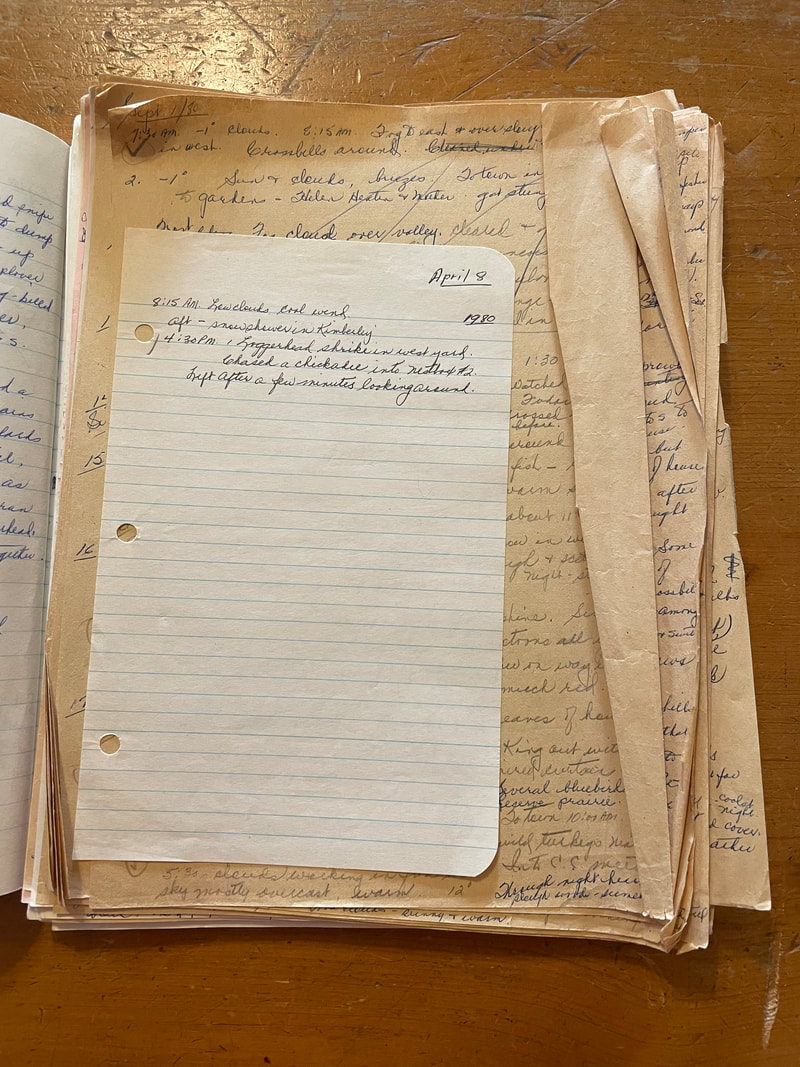
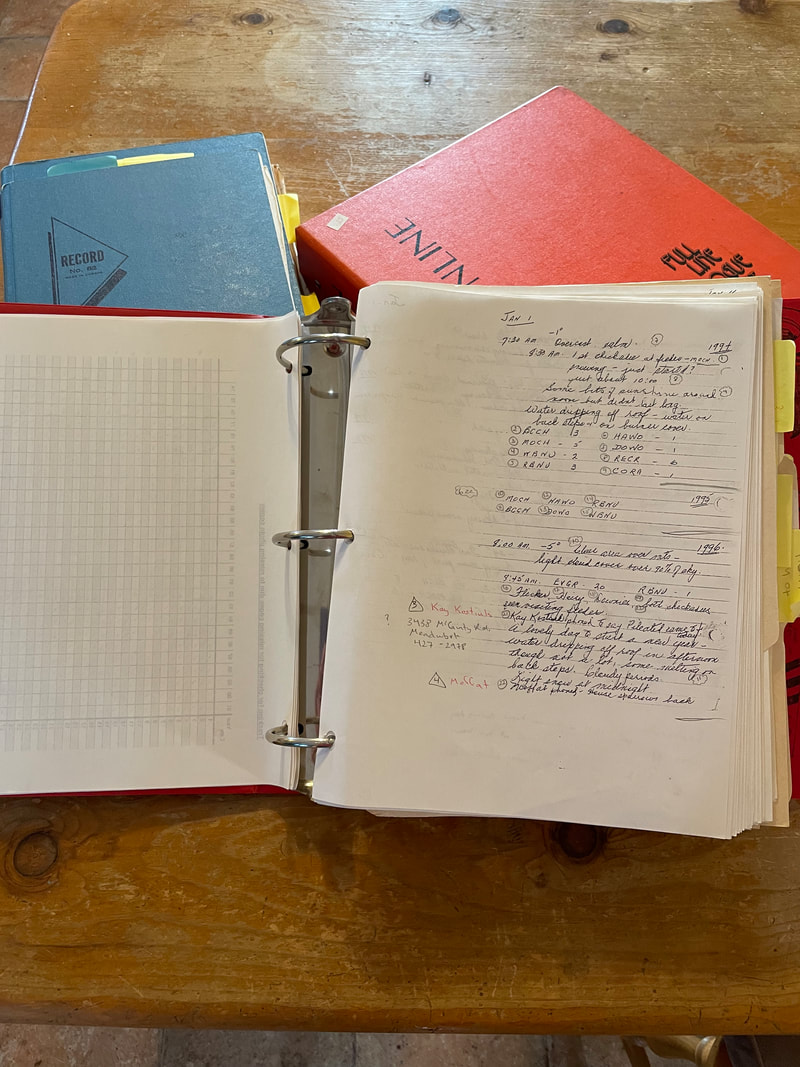
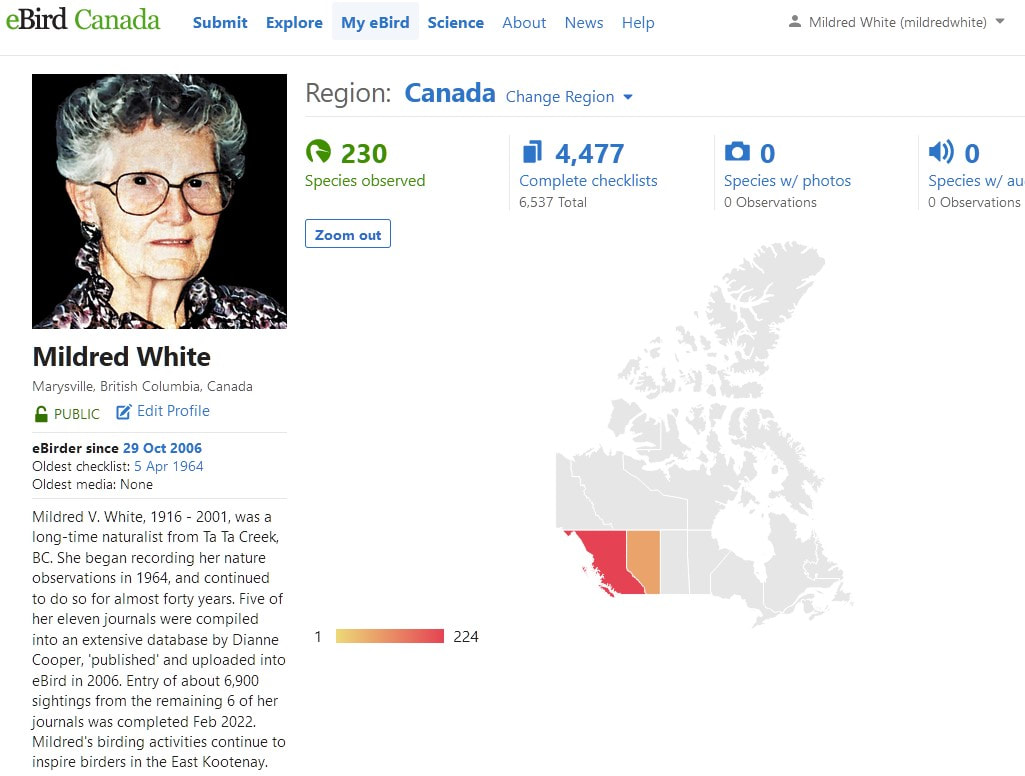
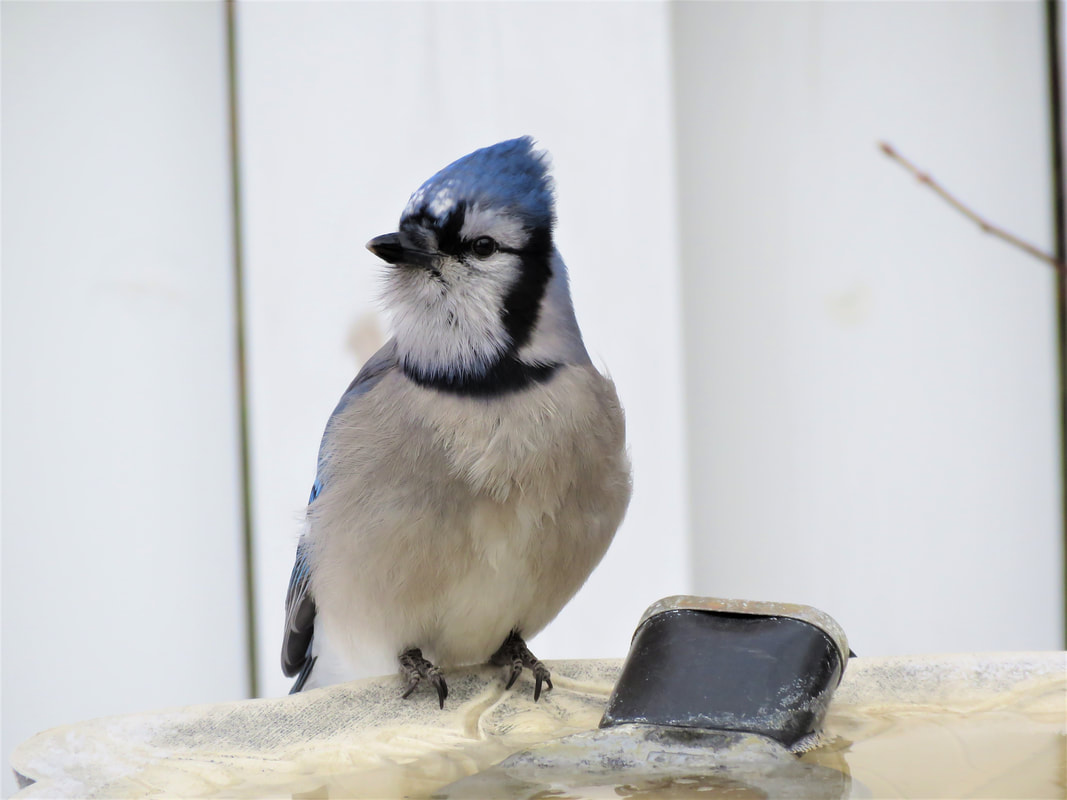
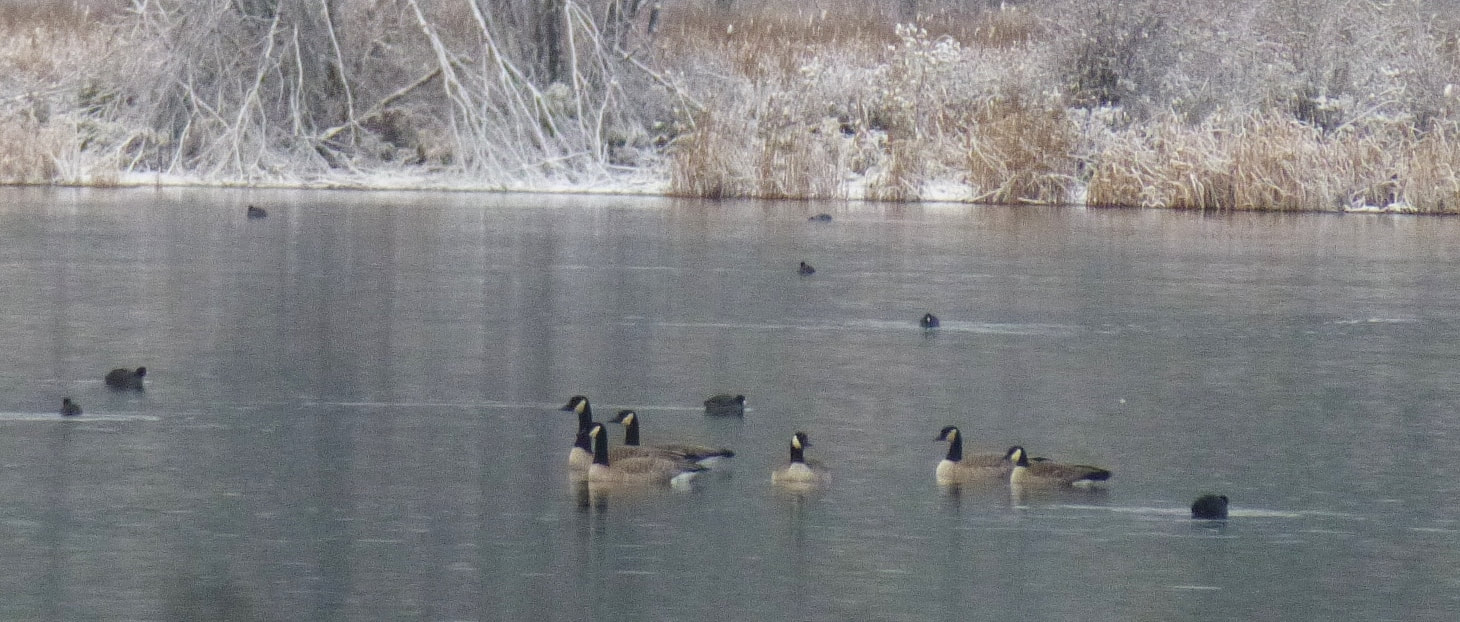
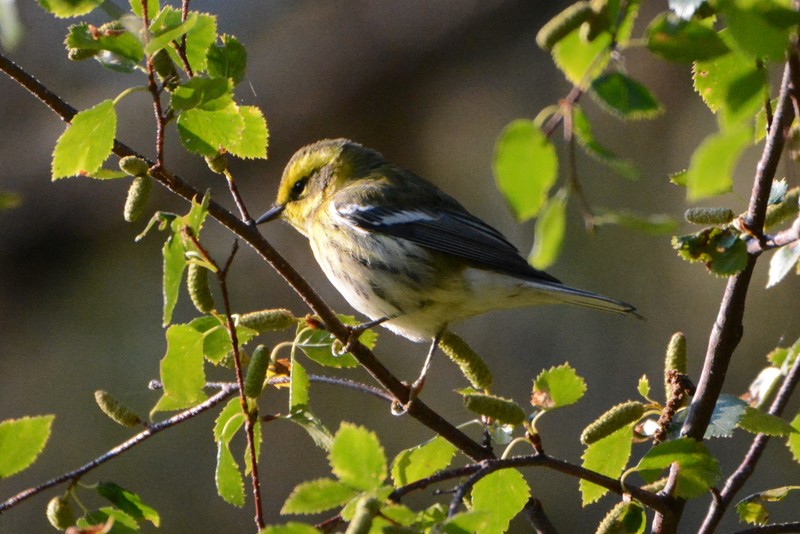
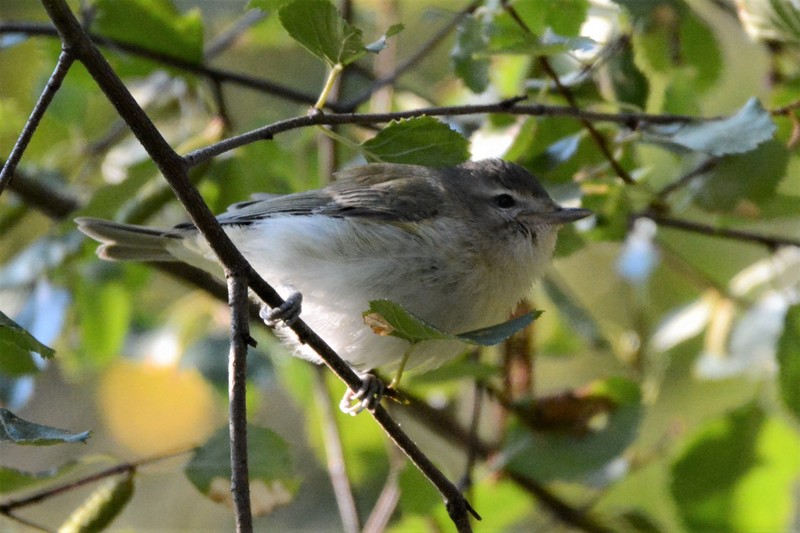
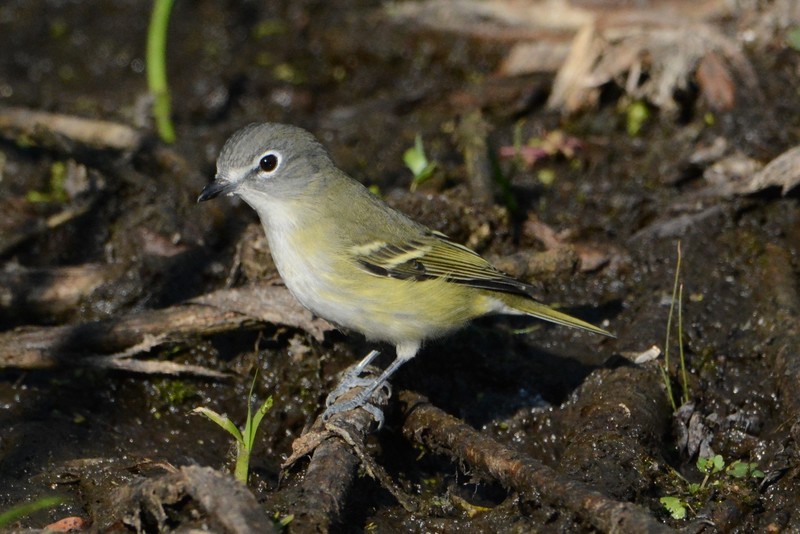
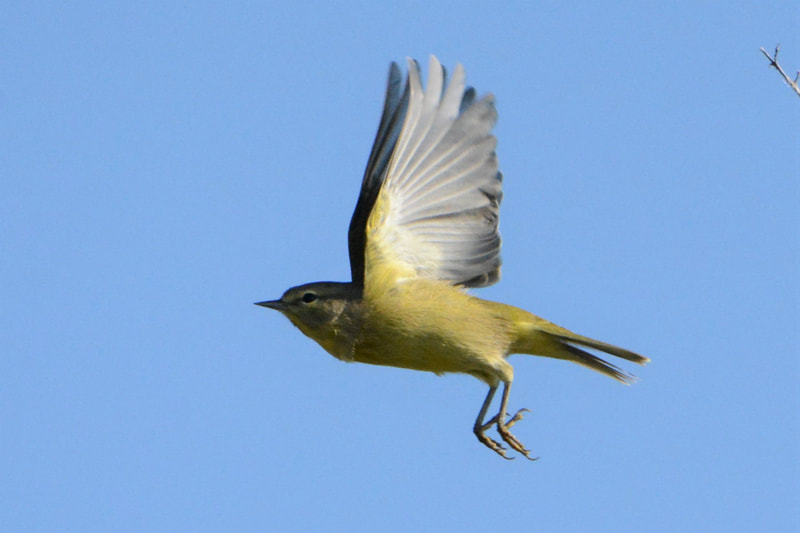

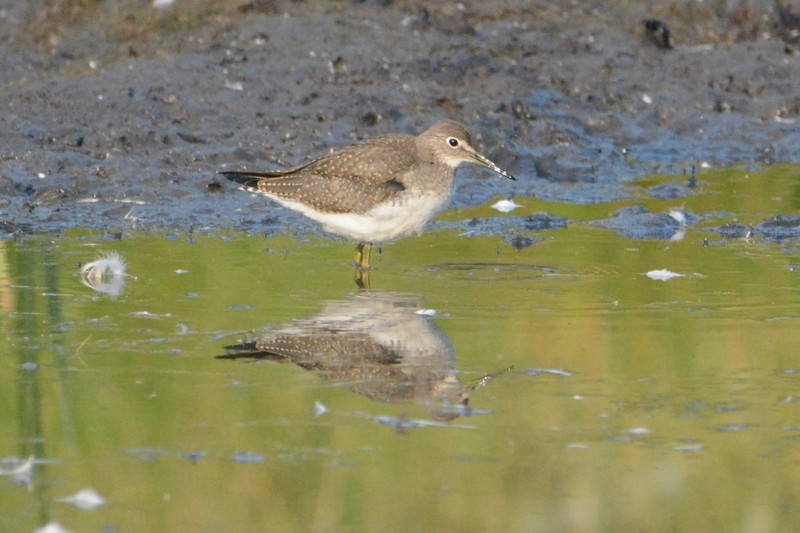
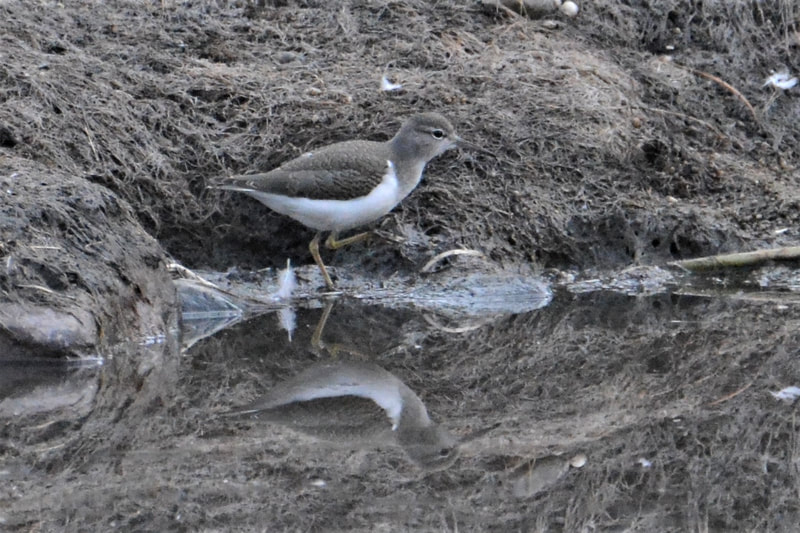
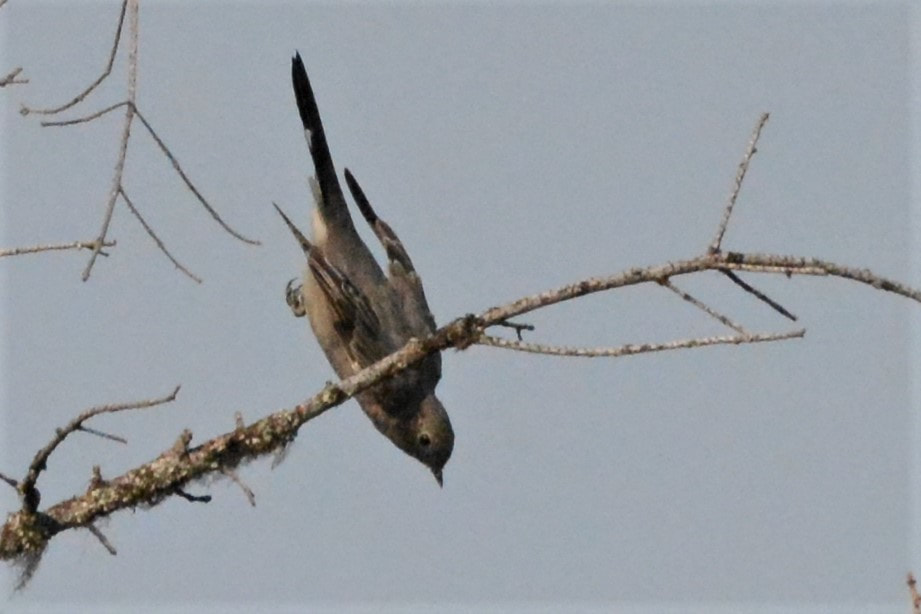
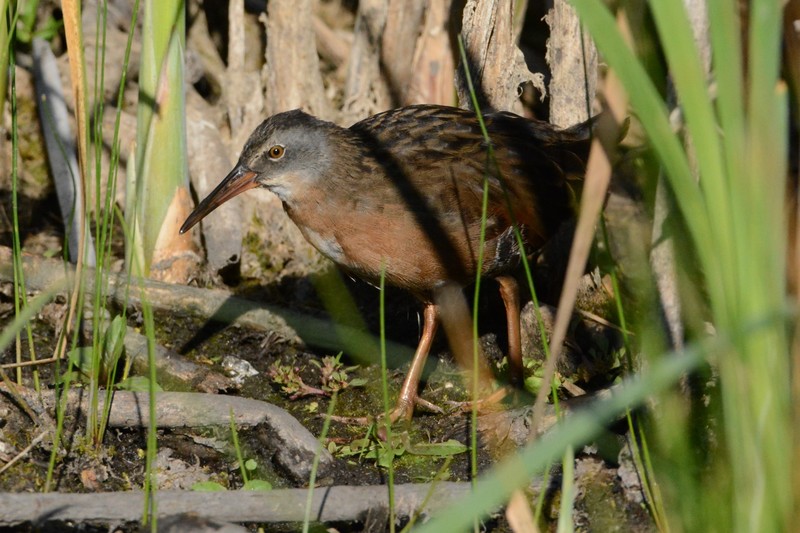
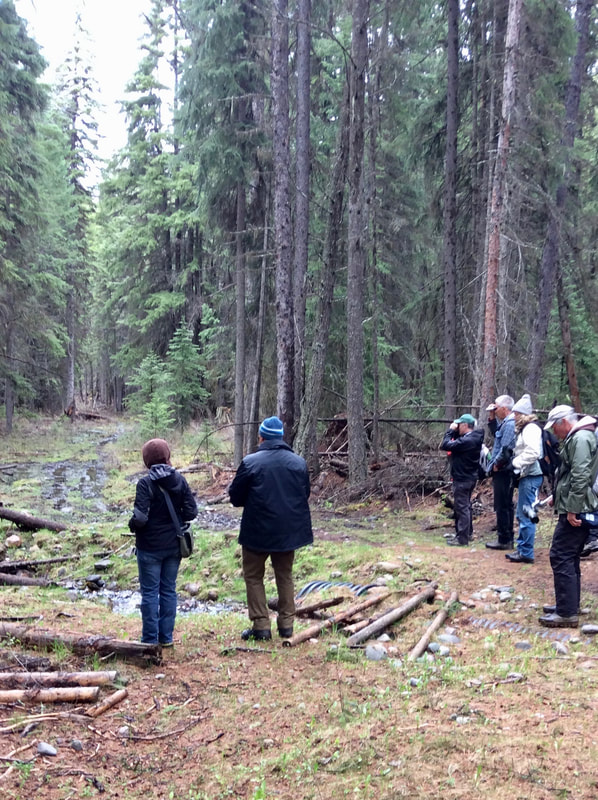
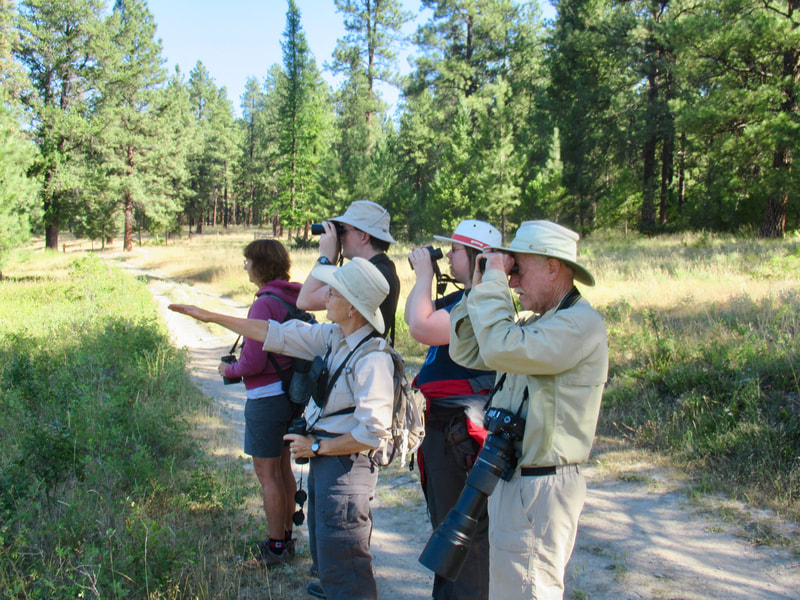
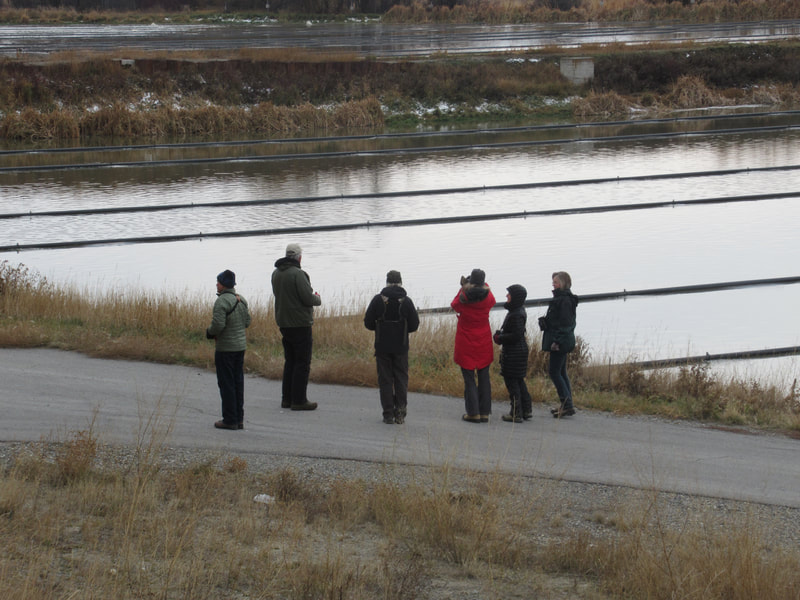
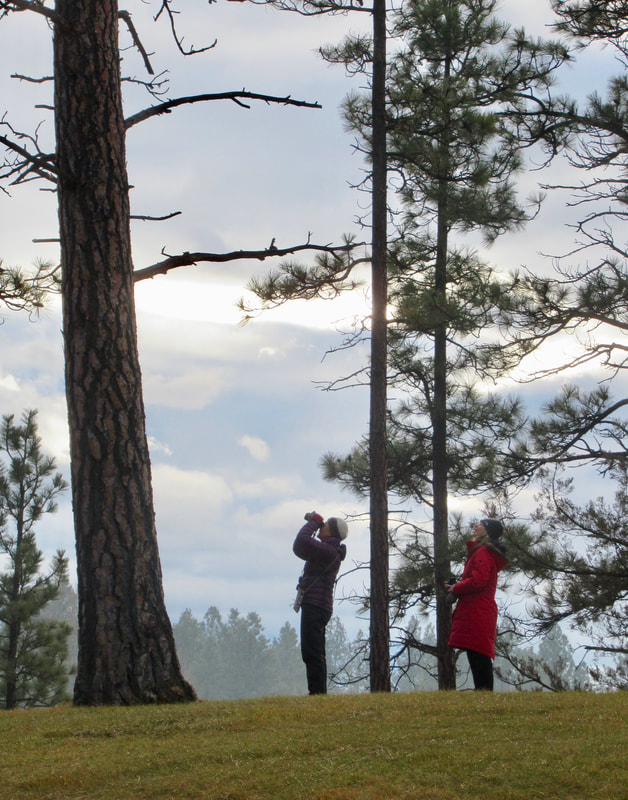
 RSS Feed
RSS Feed
